Басейнът [Baseynat / The Swimming Pool] (Binka Zhelyazkova, 1977)
Jul
9
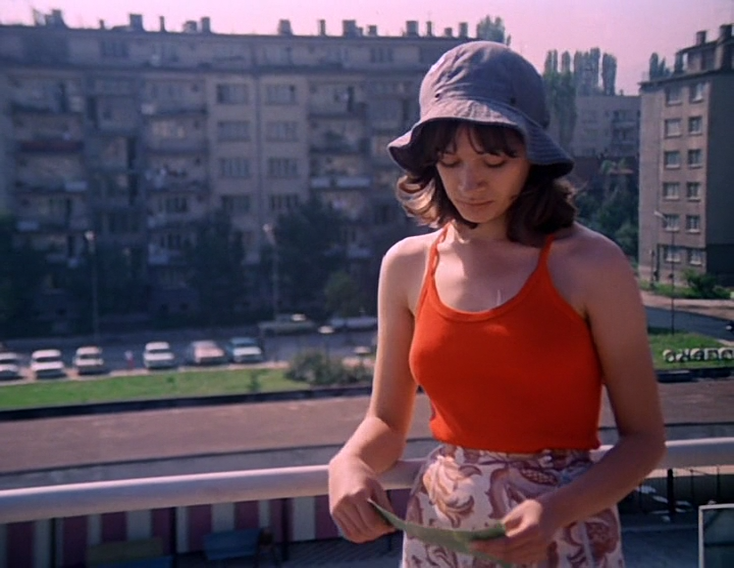
Bella (Yanina Kasheva) at the pool, holding a passport. DP: Ivaylo Trenchev.
A passport or ID*
* the Bales 2025 Film Challenge for July is, for unknown reasons, mostly not date-related and follows some sort of vacation narrative.
“My job allows me to read about strange incidents, but what I see here is often even stranger. And the strangest thing of all happened one day after midday prayer.” باب الحديد [Bab el-Hadid / Cairo Station / The Iron Gate] (Youssef Chahine, 1958)
Jul
8
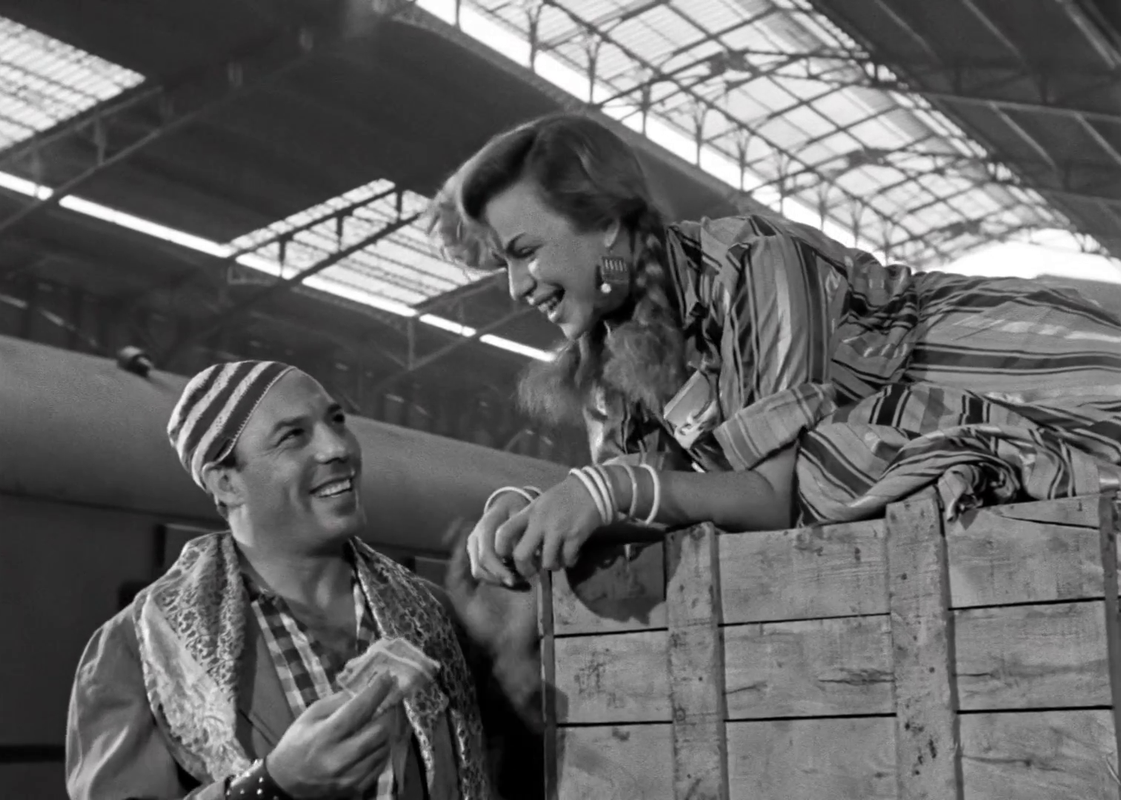
Abu-Sri (Farid Shawqi) with Hannumah (Hind Rostom) perched on top of a large wooden crate. DP: Alevise Orfanelli.
Luggage, a trunk, or a suitcase*
– Madbouli, newspaper salesman
Among the hustle and bustle of Cairo's travellers, there are those making a living. The pitiful Qenawi (Youssef Chahine) peddles newspapers, unioniser Abu-Sri moves said travellers' luggage, and Hannumah (Hind Rostom), all hips and bosom and Abu-Sri's, sells cold drinks. Qenawi wants her.
* the Bales 2025 Film Challenge for July is, for unknown reasons, mostly not date-related and follows some sort of vacation narrative.
“Mr. Hulot is off for a week by the sea. Take a seat behind his camera, and you can spend it with him. Don't look for a plot, for a holiday is meant purely for fun, and if you look for it, you will find more fun in ordinary life than in fiction.” Les vacances de Monsieur Hulot [Monsieur Hulot's Holiday] (Jacques Tati, 1953)
Jul
7
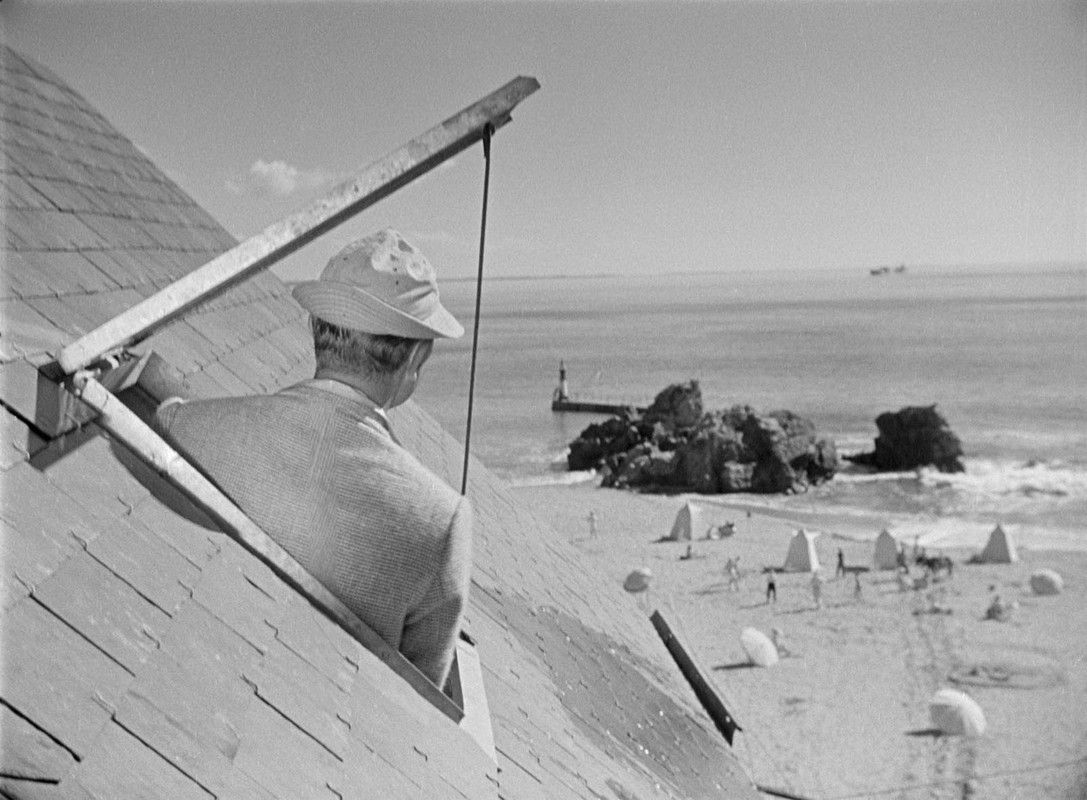
Mr Hulot's view from his hotel room. DPs: Jacques Mercanton & Jean Mousselle.
A film with people at, or taking place in, a hotel*
– opening lines
Located in the real-world Hôtel de la Plage in Saint-Marc-sur-Mer, Mr Hulot lovingly bumbles his way into your heart.
* the Bales 2025 Film Challenge for July is, for unknown reasons, mostly not date-related and follows some sort of vacation narrative.
Die endlose Nacht [The Endless Night] (Will Tremper, 1963)
Jul
6
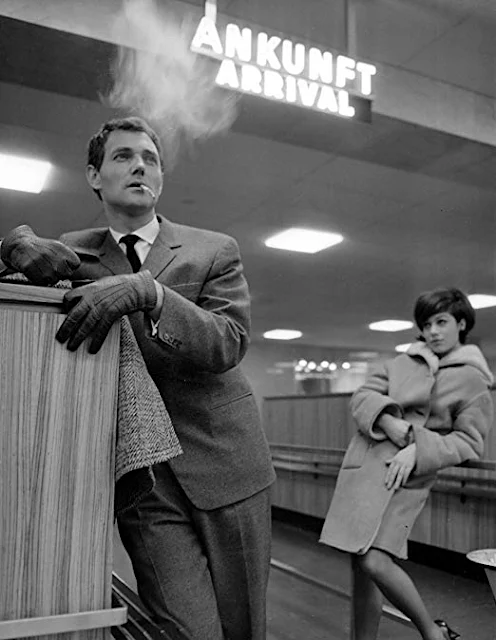
The bold and the beautiful stuck at Tempelhof. And yes, one could smoke there. DP: Hans Jura.
(People at) an airport*
It's foggy at Flughafen Berlin-Tempelhof, the Allies' airbridge to the West, and all the planes into and out of West Berlin are grounded. In any other metropolis this could mean taking a train, enjoy the city's nightlife or maybe just a bed for the night. In post-Wall bureaucracy-happy West Berlin, this means endless waits with strangers. And so, with nowhere to go, a Polish jazz band mingles with British spouses, a lonely South African farmer, a model and her beau.
* the Bales 2025 Film Challenge for July is, for unknown reasons, mostly not date-related and follows some sort of vacation narrative.
“It appears obvious that the territory is the sum of all the maps, the result of an infinite addition. Or a contrary, the territory is what is left when we remove all the sets of lines, drawings, traces and colors which are covering it. Its existence becomes doubtful.” Zig-Zag – le jeu de l'oie (Une fiction didactique à propos de la cartographie) [Snakes and Ladders] (Raúl Ruiz, 1980)
Jul
5
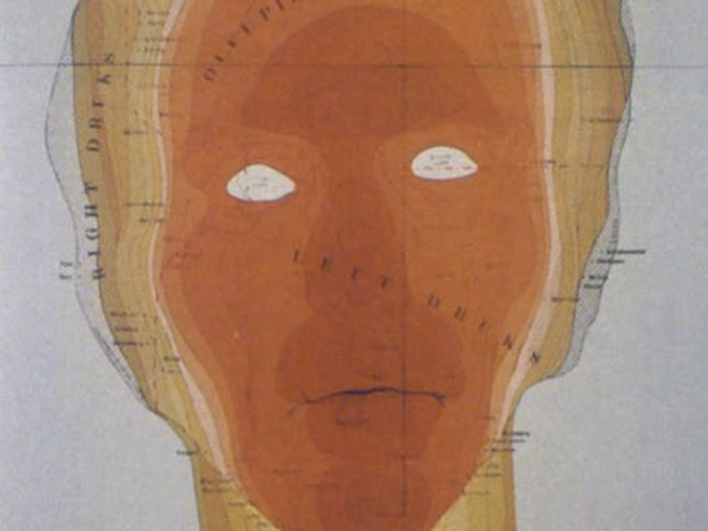
An anthropomorphic map with contour lines sketching out a man's head (via). DP: Alain Montrobert.
Traveling to my vacation destination, a map or globe*
– H., via
A man, H., joins two others playing jeu de l'oie (Game of the Goose), a board game associated with labyrinths and pilgrimage. While the three play, the game opens up maps and new roads to explore.
Following my own Bales' rules, I cannot pick a title twice. See Zig-Zag as an avatar of Raúl Ruiz's O Território [The Territory] from 1981.
* the Bales 2025 Film Challenge for July is, for unknown reasons, mostly not date-related and follows some sort of vacation narrative.
“This film tells a story of rebels (played by real rats) and cops (played by real cats). After a long domination by cats, the rats escape from prison (this is their rebellion) and find refuge in Canada. There, they feed on organic produce from a garden where the grass hasn’t been sprayed with DDT.” Rat Life and Diet in North America (Joyce Wieland, 1968)
Jul
4
Independence Day

Rats – gerbils actually – nibbling on the Stars and Stripes (via). DP: Joyce Wieland.
A movie set in the USA for Independence Day (USA)
– Jonas Mekas, via
French-Canadian patriot Joyce Wieland tells a fable of freedom.
Coincidentally, the Canadian city of Trois-Rivières, scene of the final battle of the American Revolutionary War, also celebrates an Independence Day on the fourth of July.
“On July 4, 1976 I and my camera toured the state of Colorado with governor Richard D. Lamm, as he traveled in parades with his children, appeared at dinners, lectured, etc. On July 20, I spent the morning in his office in the state capitol and the afternoon with himself and his wife in a television studio, then with Mrs. Lamm greeting guests to the governor’s mansion and finally with Governor Lamm in his office again. These two days of photography took me exactly one year to edit into a film which wove itself thru multiple superimpositions into a study of light and power.”The Governor (Stan Brakhage, 1977)
Jul
4
1976
And July 20
– Stan Brakhage
“Nobody shoves dirty money in my mouth.”The Naked Kiss (Samuel Fuller, 1964)
Jul
4
1961
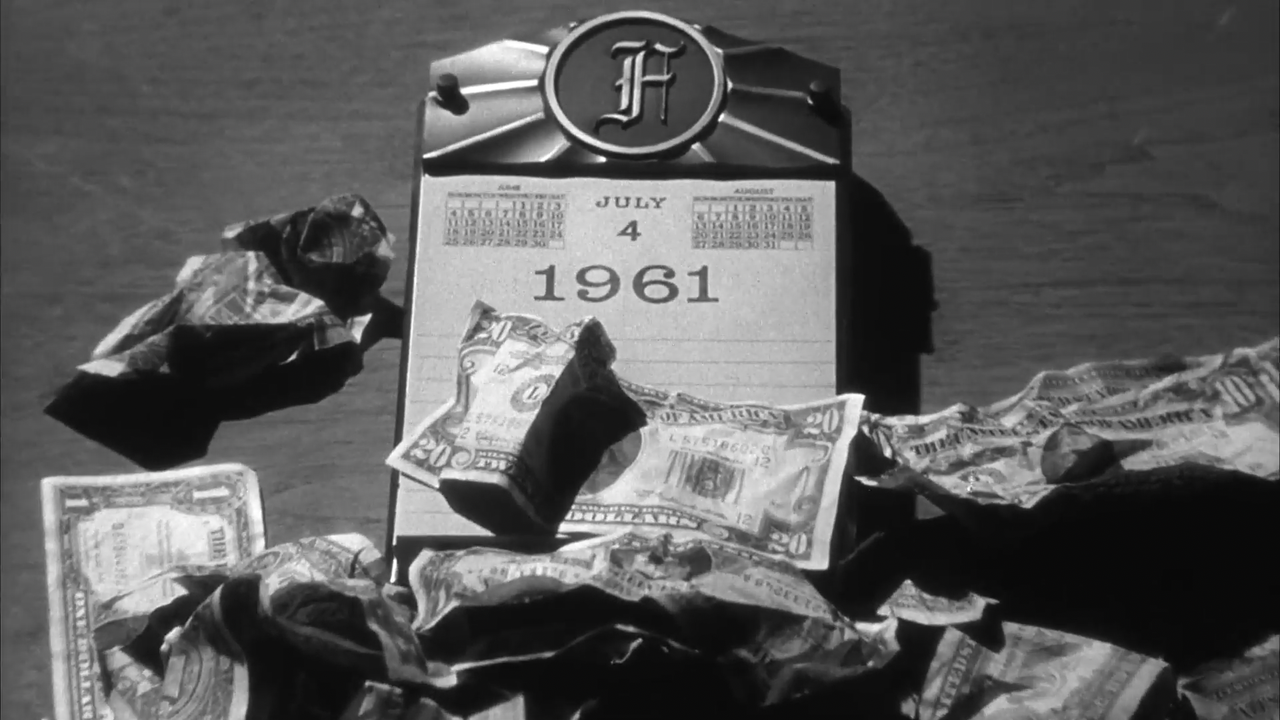
A desk calendar reading July 4, 1961, with dirty, crumpled dollar bills thrown on top of it. DP: Stanley Cortez.
– Candy
Divorzio all'italiana [Divorce Italian Style] (Pietro Germi, 1961)
Jul
3
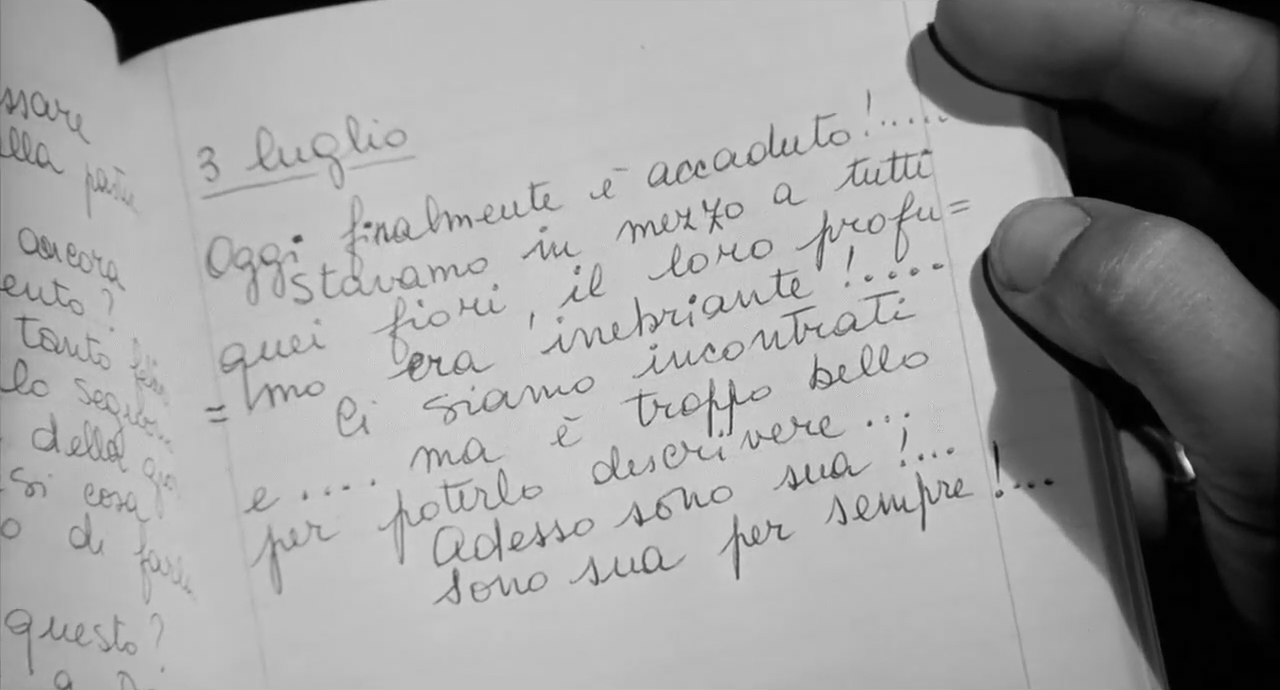
A closeup of a man's hand holding up a diary. It's the third of July. DPs: Leonida Barboni & Carlo Di Palma.
Additionally, IMDb writes that “director Pietro Germi filmed a close-up of the front page of a newspaper announcing Yuri Gagarin's flight around the earth on April 12th 1961.”
“You've won a doll and a kiss. I'll give you the doll and your girl can give you the kiss!”Lonesome (Pál Fejős, 1928)
Jul
3
Sat
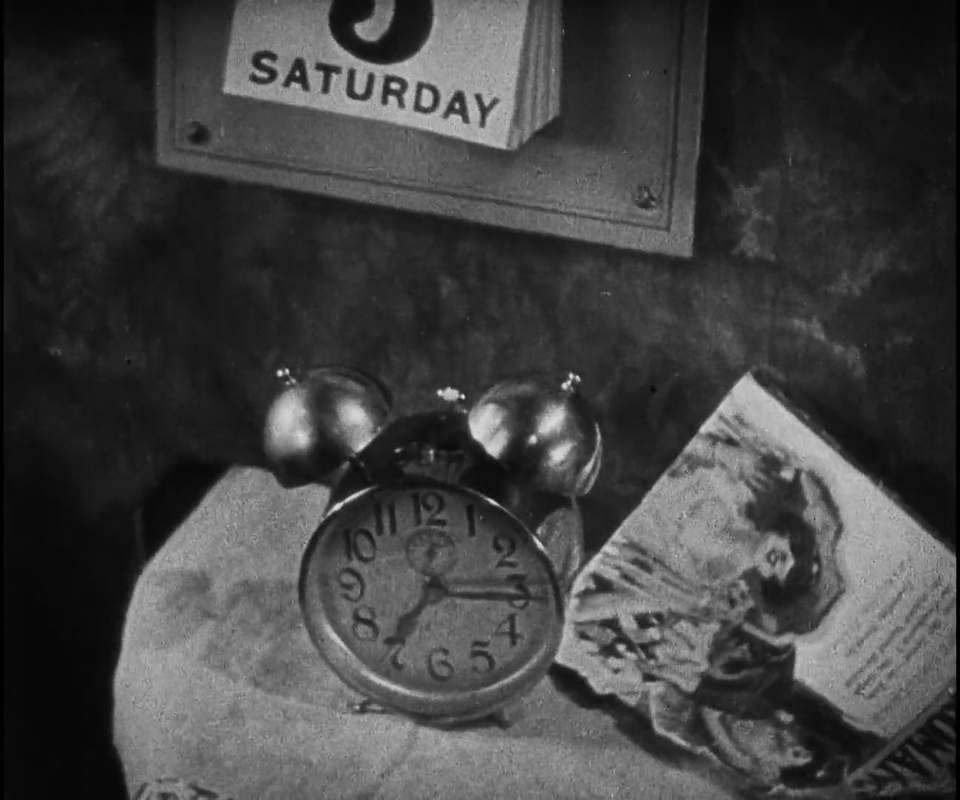
An alarm clock informs us it's 7:15 while the calendar adds that it's the 3rd on a Saturday. Next to the alarm a crumpled up ladies' magazine. DP: Gilbert Warrenton.
– Coney Island barker